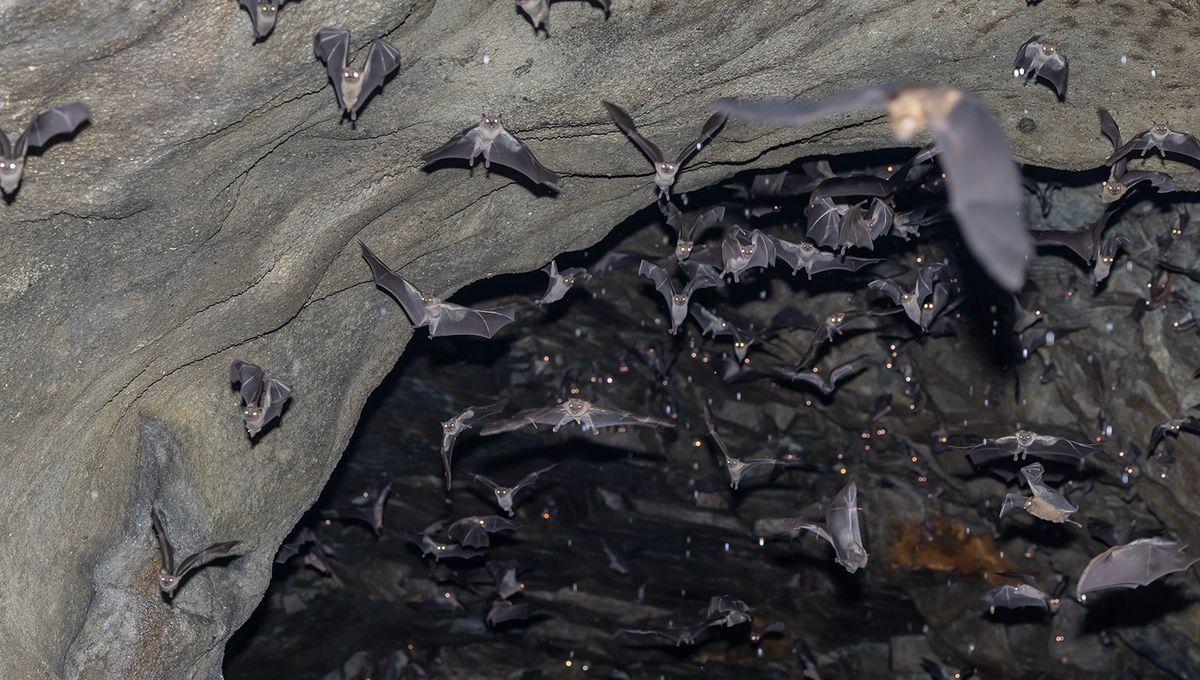-
Fil d’actualités
- EXPLORER
-
Pages
-
Blogs
-
Forums
20 New Bat Viruses – Some “Cousins” Of Deadly Hendra And Nipah – Spark Fears Of Human Disease

20 New Bat Viruses – Some “Cousins” Of Deadly Hendra And Nipah – Spark Fears Of Human Disease
Intrepid microbe hunters have discovered 20 new viruses lurking in the bat populations of the orchards of southwestern China. Along with new species of bacteria and protozoan parasites, the find has sparked concerns about the potential risks to humans, as two of the viruses are in the same genus as the deadly Hendra and Nipah viruses.
Bats are notorious for hosting viruses that go on to cause all sorts of problems for humans. Only recently, scientists wrote of a group of coronaviruses in Japanese house bats (Pipistrellus abramus) that could be just a mutation away from jumping into humans. Despite this, the authors of the new study write, “the composition of the infectome […] within bat kidneys remains poorly understood.” To learn more, they sampled kidney tissues from 142 individual bats from 10 different species in China’s Yunnan province, between 2017 and 2021. Sequencing analysis revealed 22 viruses, a staggering 20 of which were unknown to science. Two were of particular concern as they belong to the Henipavirus genus, the same group that includes the Nipah and Hendra viruses. Both Nipah virus disease and Hendra virus disease can come with a range of symptoms, including respiratory and neurological issues. While the infections are rare in humans, they can be deadly. The World Health Organization (WHO) estimates a case-fatality rate of 40-70 percent for Nipah virus. There have been fewer human infections with Hendra virus, but the US Centers for Disease Control and Prevention (CDC) says that over half of these have been fatal. Commenting on the new study for the Australian Science Media Centre (AusSMC), molecular virologist Dr Vinod Balasubramaniam said the newly discovered henipaviruses share 52-75 percent of their genetic information with Nipah and Hendra. “Significantly, this research marks the first time full-length henipavirus genomes have been identified in Chinese bats, highlighting Yunnan as a critical region for zoonotic emergence due to its ecological parallels with Nipah-affected areas like Malaysia,” said Balasubramaniam. Bats living near fruit orchards in Yunnan were sampled for the study. Image credit: Kuang et al., 2025, PLOS Pathogens (CC-BY 4.0) Henipaviruses are known to spread through bat urine, so the fact that these new viruses were identified in bats living in orchards close to human villages was concerning to the researchers. There could be a risk of viral transmission through contaminated fruit, or via an intermediate livestock host – Hendra virus, for example, has previously spread to humans from infected horses. As veterinarian and wildlife disease ecologist Dr Alison Peel pointed out to the AusSMC, “we can’t automatically assume that [the new viruses] can cross over to new species.” “We have other examples of close evolutionary cousins to Hendra and Nipah that appear not to be of any concern for spillover, so there will need to be some more laboratory studies on these new viruses to determine the actual risk,” Peel said. Rather, the study highlights the yawning gaps that still exist in our knowledge of bat microbes. The newly discovered bacterial species, Flavobacterium yunnanensis, and the parasite tentatively dubbed Klossiella yunnanensis, underscore this further. We simply don’t know enough about what microorganisms are living in bats and what that could mean for human health. “Overall”, the study authors write, “these findings provide valuable insights into the infectome of the bat kidney, highlighting the need for broader microbial surveillance beyond the gastrointestinal tract.” The study is published in the journal PLOS Pathogens.


